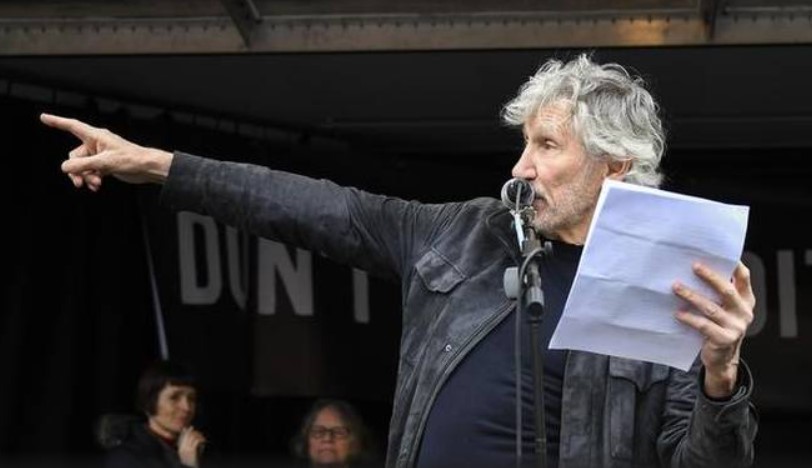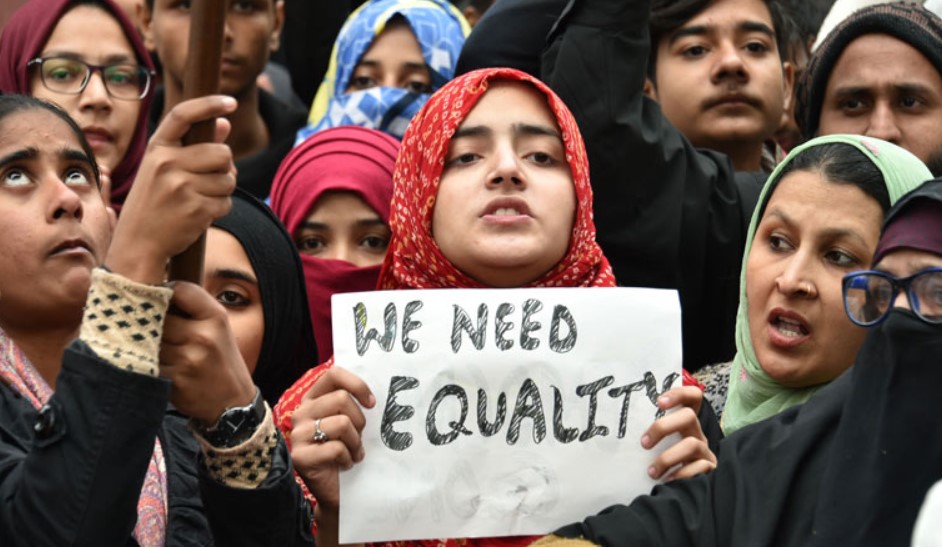
In February 2020, when CAA-NRC protests were at the peak in India, the guitarist and co-founder of ‘Pink Floyd’ Roger Waters read some part of the activist and poet Aamir Aziz’s poem ‘Sab Yaad Rakha Jayega‘ (Everything will be Remembered). Waters at that time was speaking at an event where he was demanding the release of Wikileaks founder Julian Assange who had been in prison. He read out the English translation of that poem and said that Aziz was fighting against the Indian Prime Minister Narendra Modi’s fascist and racist ‘Citizenship Amendment Act’.
We know that poetry or literature in politics has a long history. Earlier, the rulers used to have poets to sing and write about the virtues, conquests, and triumphs of the monarchy and populace associated with them. But after the 19th century, poetry started becoming more linked with anti-colonial and anti-establishment movements across the world.
In India during its freedom struggle, the opposition of Emergency in the 1970s, and most recently during the anti-CAA-NRC and the Farmer protests, anti-establishment poetry increased and flourished. This poetry or literature, though does not solve the issues at hand directly, nor it, be thought of as great pieces of literature or art. So, it can be questioned what exactly this resistance poetry contributes.
In this article, I shall be narrating about the significance of protest poetry and literature in the anti-establishment movements in the past and the present in our country. Resistance literature and poetry are used to build solidarity and unity among the participants of the movement. A lot of people who criticize protests and movements for being disruptive and for not producing results and also who speak in favour of protest movements talk about unity, solidarity, and continuation of the movement with the same gusto. Resistance literature helps build squarely that.
By writing and circulating poems, social movement participants inform the readers and the regimes that resistance and opposition exist. It motivates the existing and would-be participants. It calms anxiety that participants might have, especially in moments of extreme political oppression. These poems generate emotional and cultural connections among the social movement participants and the common citizens. John Stauffer in, his foreword in American Protest Literature, writes, “I define protest literature broadly to mean the uses of language to transform the self and change society.”
Protest literature does not only include poems and prose but also street art, cinema, and songs. During the anti CAA- NRC protest and JNU students protest against the fee hike in 2019, street art and graffiti became quite popular. Protest literature and other mediums act like guidebooks for social and political transformation. It becomes a medium to express dissent.
It is a workpiece with a defined opinion, an often harsh and sarcastic tone, full of anger, a clear idea of, what the issue is, and a usual belief that truth and justice will be victorious. The result of this literature includes pity, outrage, disgust, and awareness. But the main aim of protest or resistance literature is awareness of the country people, fellow protesters, and authority.
One of the central aims of Resistance literature is to speak for the historically oppressed and to record the injustices heaped. It demands justice for those whose rights were usurped and retributed against the oppressor. Resistance literature can also be seen as an oral narrative of History. A version that might have been hidden in the mainstream by the powerful. It can be seen as an alternative version of events and can inform future generations of the course of events that have led to present socio-political situations.
During the emergency, poets like Pash and Ramdhari Singh Dinkar, as part of the movement against the Exigency, wrote and recited poems. Many underground poetry clubs formed. Resistance poems and literature were written and circulated in places like the Indian Coffee House and Tihar Jail. Young men wrote these resistance poems who had little to no literary training. They were involved in politics through the student wings of the Communist, Socialist, and Maoist parties. Students wrote poems on paper slips or pamphlets and passed them around among trusted friends and in cafes, universities and sung them at political meetings.
A lot of those leaders and students became political leaders later on. It can be said that those leaders today resent student movements because they are a product of that and know the potential of these movements. They are scared of their past.

In the same way, after almost 45 years, the anti CAA protests and the ongoing Farmer protests are also marked by a flowering of resistance poetry. The protestors, which included, mostly students sang and recited the works of earlier poets like Faiz Ahmed Faiz, Rahat Indori, and Habib Jalib. Also, many new poets took inspiration and wrote, keeping in mind the present political and social situations. The majority of them are young students of varying religions, social and economic statuses, and from different places in the country.
Many students from small colleges and universities also participated this time, unlike before, when only students of metro cities were active participants. The streets saw recitation of their poems in the middle of protests and became popular on the Internet amongst youth. This was the new and young India our predecessors dreamt. People all over the nation and even the world connected with these poems and literature because of the rise of extreme nationalism and xenophobia that is prevalent globally.
The protest poetry of India’s Emergency, anti CAA – NRC, and Farmer protests embody a spirit of rebellion. For writing and evoking the emotion of human suffering caused by state oppression, poets show the world ‘injustice and suffering’. They also affirm the essence of ‘life’ and humanity that political repression attempts to destroy. The idea behind writing resistance poetry in anti-establishment movements is to spread awareness, feeling of rebellion, excitement, and solidarity among the people who, because of the stringent laws and actions, might feel alone and scared.
It has been aptly said, ‘Would songs be sung even during darkness and bleakness? Yes, then songs would be sung, about darkness and bleakness’.
Resistance literature does exactly that.
She is a postgraduate in History from the University of Delhi and want to get a doctorate in the subject ultimately. She works in a publishing company currently.


I’m absolutely in awe of this article. Thank you.